Life Cycle:
Most marine turtle species have a similar life cycle.
The eggs are left to incubate in the sand and once the hatchlings emerge they make their own way down the beach into the ocean.
Most turtle species nest on beaches next to ocean currents that take the hatchlings out into open ocean for the next phase of the juvenile turtle, known as the “lost years”, where the turtles live out in the open ocean.
Very little else is known about this early phase in any turtle’s life.
When the hatchlings mature the juvenile turtles come back closer to shore to forage and grow until they are old enough to breed.
Breeding often occurs in breeding aggregations close to the shore and females may mate with more than one male.
The females then haul themselves up onto suitable beaches to choose a spot to lay a clutch of eggs.
Turtles can lay several clutches of eggs during a season and females may emerge every two weeks to do this.

Flatbacks are a little different from this, they tend to nest on sheltered beaches.
The hatchlings must swim out to deeper waters quickly to avoid predator-rich near-shore waters.
We know that flatback hatchlings and juveniles stay closer to shore than other species of turtles, foraging in water over the continental shelf.
Nesting:
The only time that flatback turtles come out of the ocean is to lay their eggs.
Flatback turtles nest on sheltered beaches on the mainland and on offshore islands.
They emerge from the water, find a suitable site and start digging a body pit, showering sand in all directions from the motion of all four flippers digging.
If the sand is too dry they may give up on the pit and move along the beach to try again, or simply return to the water to try in a different spot.
If the conditions are correct the female will hollow out an egg chamber, gently scooping sand out with her back flippers.
Eggs are laid in the chamber, which is then covered with sand and gently patted down with the back flippers.
The turtle then moves forward and camouflages the nest by flicking more sand over it before returning to the ocean.
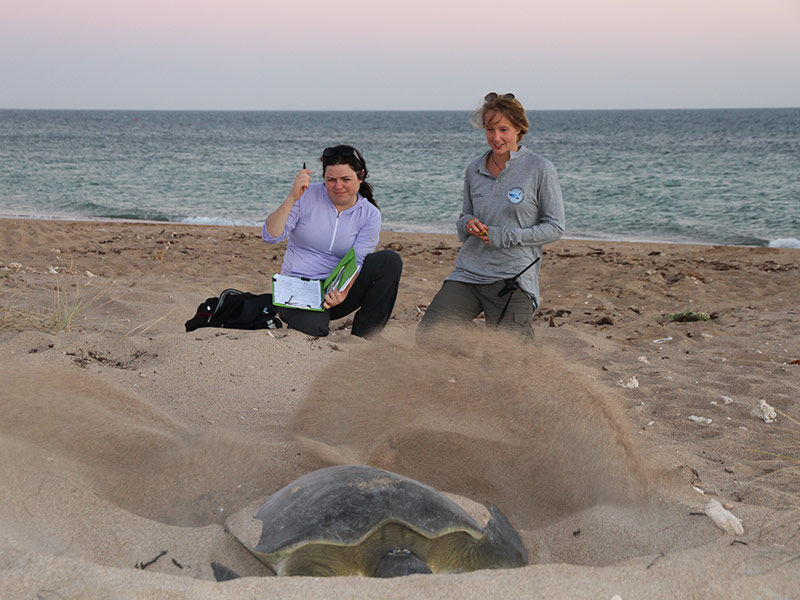
Females can lay several clutches of eggs each season, they will emerge approximately every two weeks to dig another nest.
Eggs:
Flatbacks lay around 50 spherical, soft shelled, white eggs.
Eggs are around 5cm in diameter, the second largest of any turtle. Eggs take around 50 days to hatch.
The temperature that the eggs are incubated at determines the success of the nest, this is known as temperature-dependent sex determination.
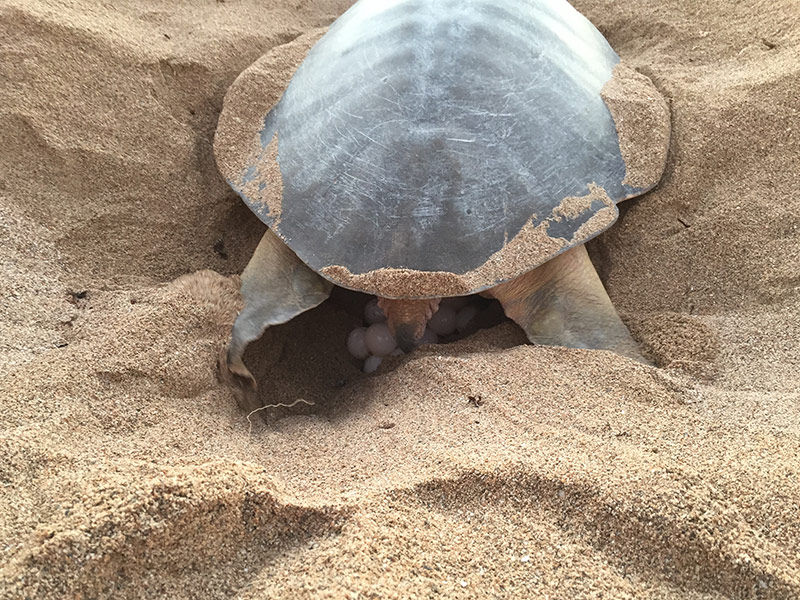
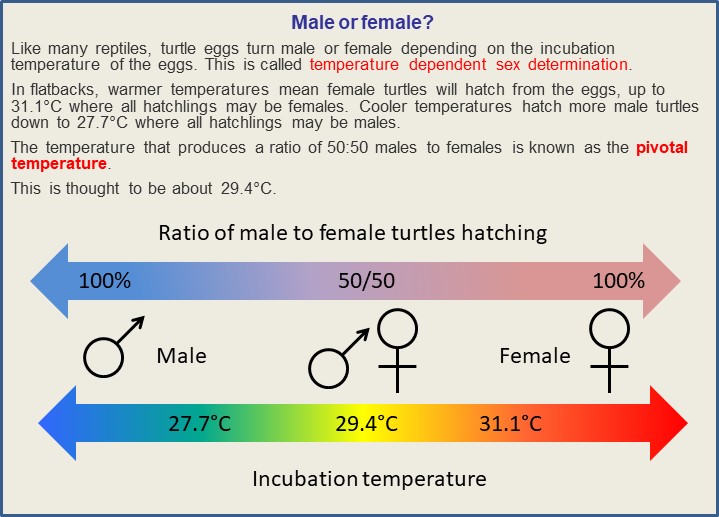
If eggs get too cold or hot, or the nest gets flooded that can reduce the hatching success.
It is thought that, even at this early stage, the baby turtles are orienting themselves with the earth’s magnetic field.
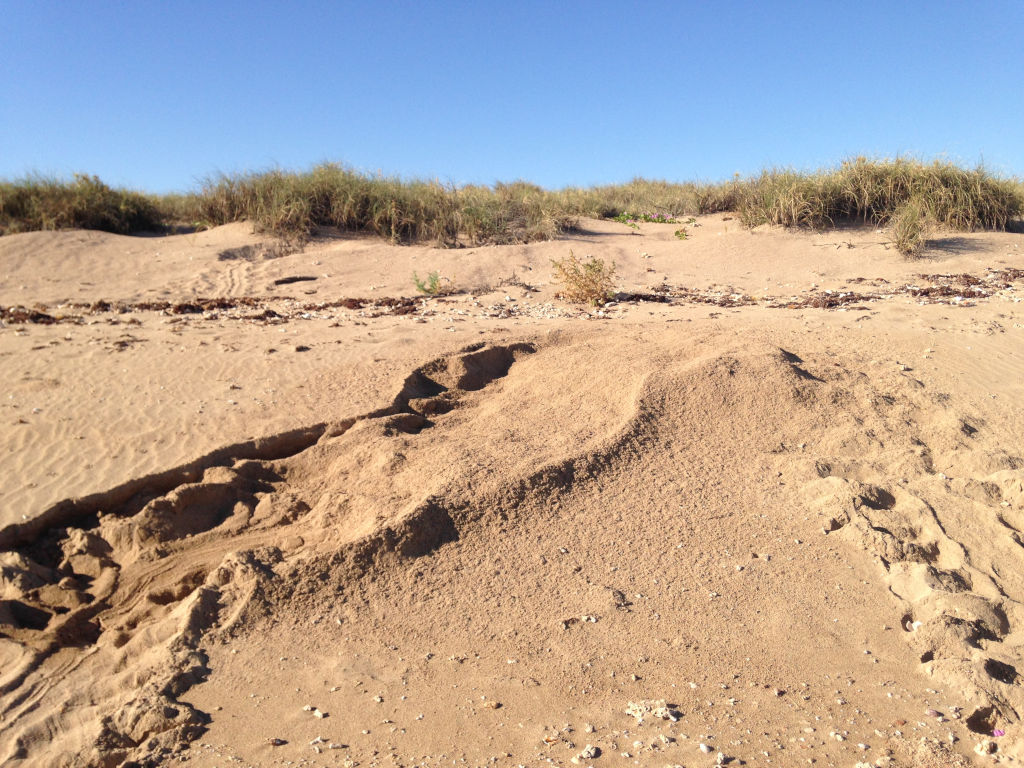
Hatchlings:
Eggs are left to incubate in the sand and when they hatch, the hatchlings dig themselves out of the nest and must run the gauntlet down the beach into the ocean and then swim for their lives through predator-rich near-shore waters.
It is very important for hatchlings to actively make their own way down the beach, tempting as it may be to give them a little help.
We do not fully understand how turtles develop their exceptional navigation systems but having the opportunity to come through dry and wet sand and through the surf zone somehow helps them find their way back, decades later, when they return to the beach where they hatched.
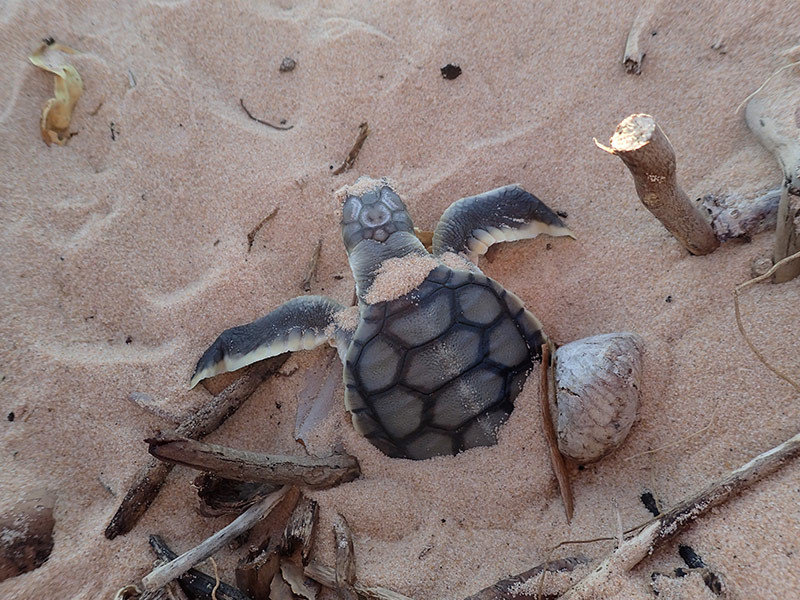
Unlike other turtles there is no evidence that flatback turtle hatchlings use currents to move out to open ocean.
They are thought to stay relatively close to the coast in surface waters of the continental shelf.
As they grow into immature turtles they inhabit sub-tidal soft-bottomed habitats.
As adults, they can migrate to feeding grounds over 1300km away, however they do not travel in schools or all follow one path.
They stay within their breeding population and usually return to nest beach at the same beach that they hatched on.
Juvenile and adult male turtles:
Very little is known about juvenile or adult male flatback turtles.
Much of the information we have so far comes from when these turtles strand on beaches.
If you find a stranded turtle on a beach in WA and the turtle is alive you should report it to Wildcare Helpline on (08) 9474 9055.
If the turtle is deceased, please report it to the nearest DBCA office.
Equally we would love to know if you have video footage, or other information, about male or juvenile flatback turtles, sometimes reports from members of the public can give us valuable insight into these less well-known life stages.
See more on how to get involved with this research.
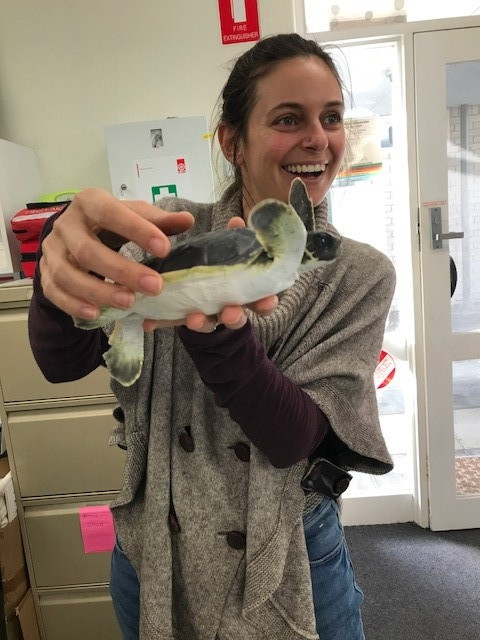
Mating
Once turtles are mature they will return to near-shore environments to mate then the cycle will begin again.
The first female flatback, from Mon Repos in Queensland, that was marked as a hatchling returned to her hatching beach to lay her first clutch of eggs at 21 years old.
